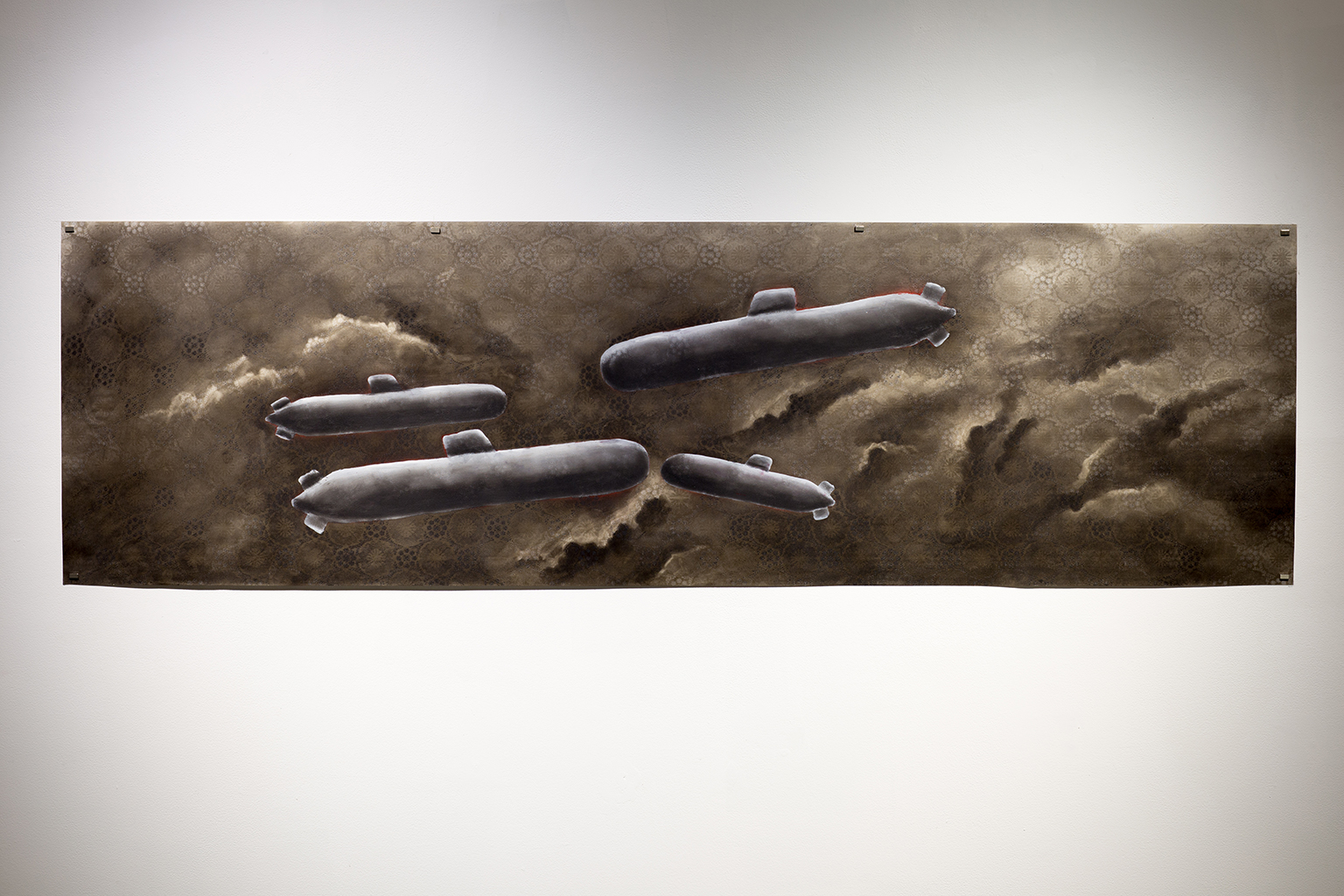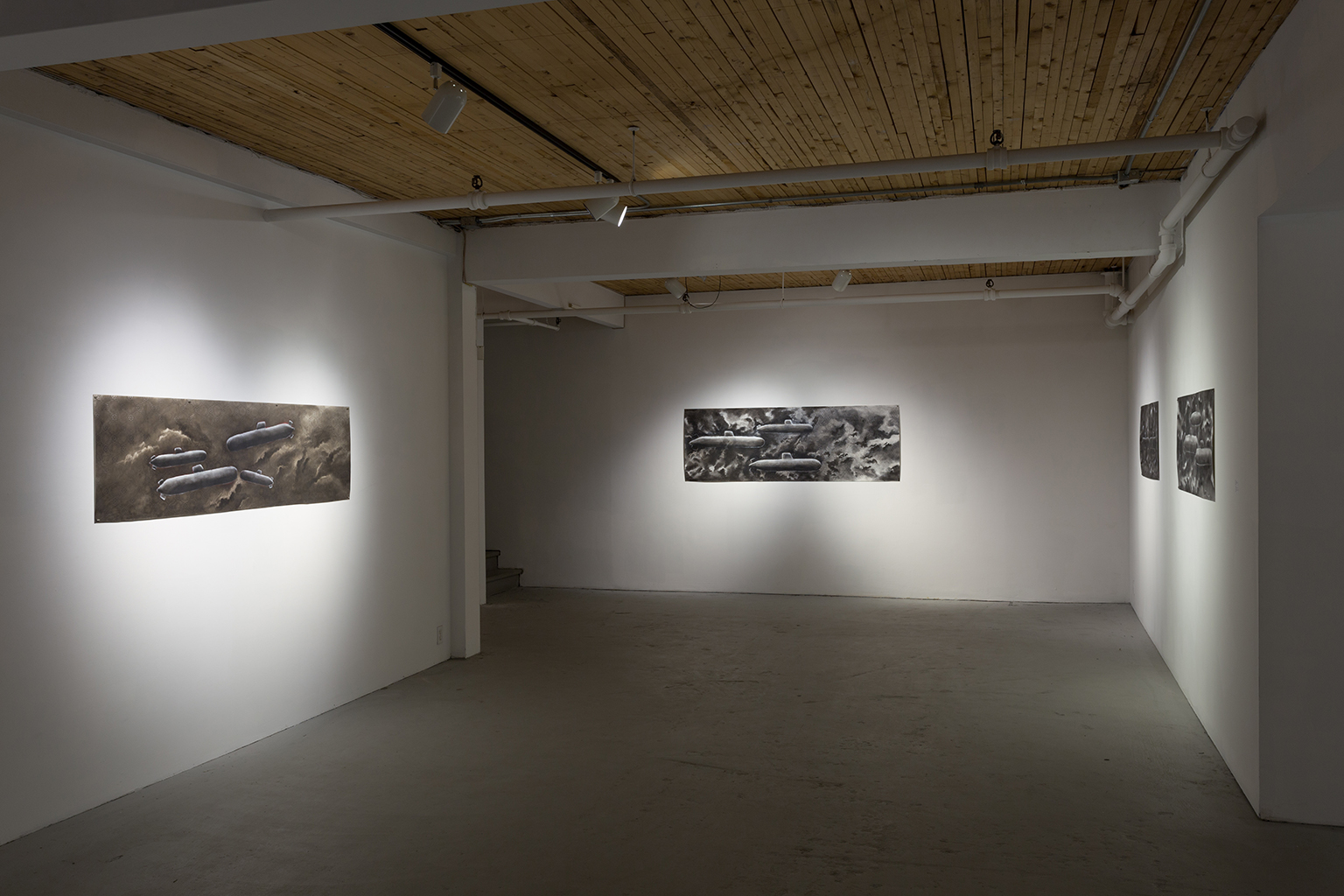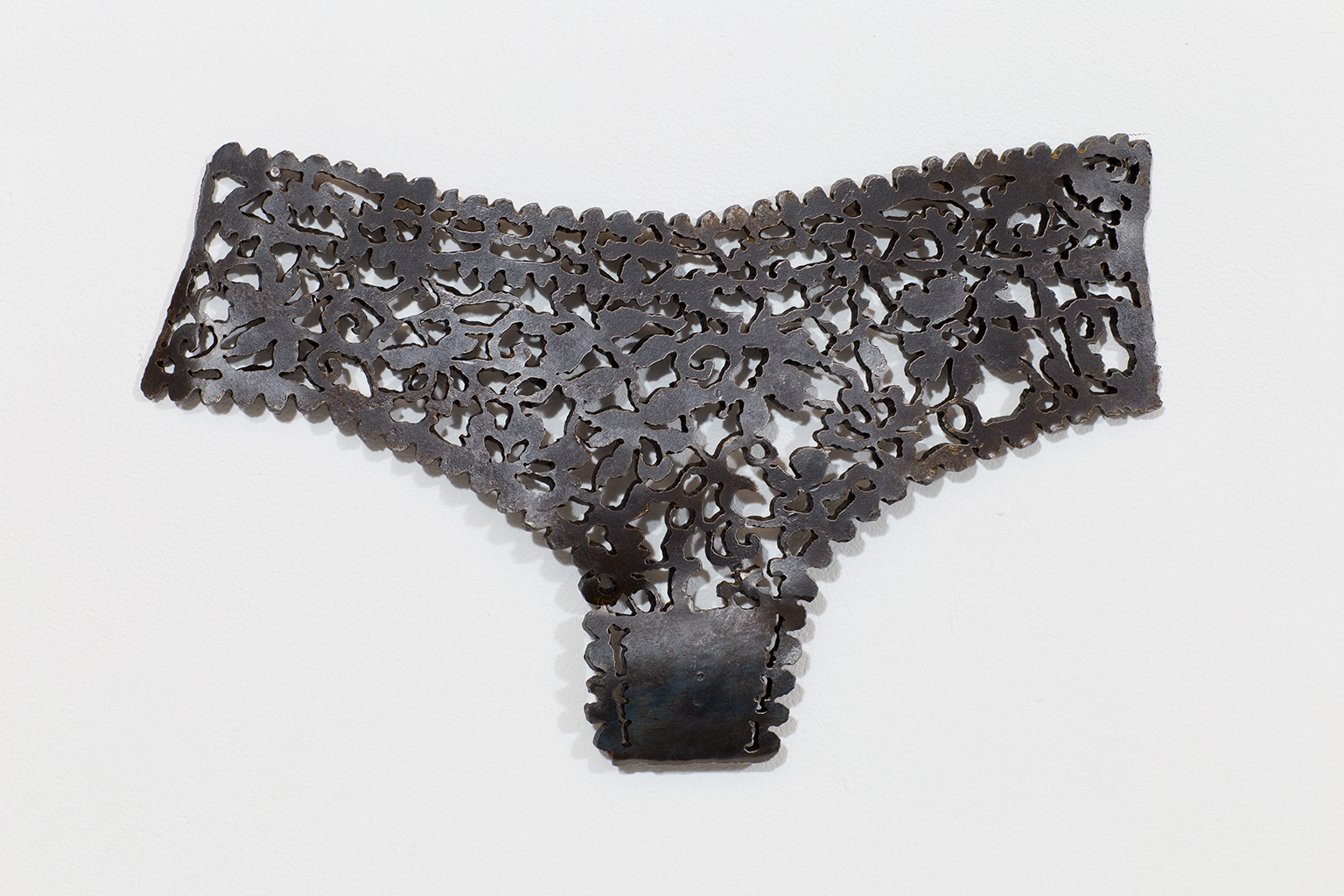Try Me
Text by Sara Nicole England
Laughter, discomfort, perplexity: these are all plausible reactions to the work by sculptor Cal Lane. The artist’s most recent body of work is an affective assemblage of incongruous parts that, taken together, violate our mental patterns and expectations. Charged with contradictions, metaphor, sexual undertones, and unsettling associations, Lane’s unlikely combinations use absurdity as a way of pointing to western society’s normalized habits and conventions, often with an emphasis on gender and sexuality.
For the exhibition Try Me, Lane installs a basketball court in the gallery. The two basketball hoops on opposing walls are embellished with silver-coated frames and lustrous mirrors, which serve as decorative backboards. In place of nets, women’s black lace underwear delicately hang from hoops. A decorative rug stenciled with court lines performs as the court floor. It is a mise-en-scène set in motion by viewer’s reconciliation of the individual parts to the whole, and to their original function. Panties regard themselves in the mirror or perhaps measure up their opponent, which, not without irony, is the mirror image of itself. Themes of gender and sexuality are performed and imagined in the upward voyeuristic gaze of the viewer and the expected swoosh of the ball into the net. This is further elaborated by phallic impressions formed by court lines and their likeness to a work of modernist abstraction—a movement wrought by notions of masculinity. The decorative rug’s connection to femininity and domesticity juxtaposes the rigid geometry.
Lane further explores the historical gendering of technology, industry, and war in her series of wallpaper drawings, which depict war submarines on cloud patterned wallpaper. The domestic material used to render the drawings elaborates on the innocence of the submarine in popular culture in spite of its reality as a phallic war object. Like the image of the submarine, women’s undergarments—decisively referred to as “panties” in the works’ titles—are reoccurring subject matter in Lane’s work, and recall similar associations to childish innocence. Retired industrial objects including a metal oil can and tank are intricately cut to create a series of steel-sculpted lace panties. The contrast between the inflexibility of the metal and the delicate lace pattern sharpens the broader culturally-defined binaries associated with the materials. Lace, a signifier of female sexuality and feminine values including fragility and daintiness, is exasperated by the larger-than-life scale of the steel works, and made both humorous and unsettling.
The tension between materials, their intended functions, and accrued meanings in Try Me exposes both the durability of signification and its instability. Cal Lane orders materials and objects with precision; materials and objects in Try Me embody social forces and reveal their influence on our ability to perceive. Materials undermine their accrued meanings while, simultaneously, unable to rid themselves of their cultural significance. At times objects become subsumed by their signifiers insofar as they perform as stand-ins for seemingly detached forces. Try Me places these values—and their legitimacy—under scrutiny by making them explicit through a series of playful and unsettling object lessons.


























































